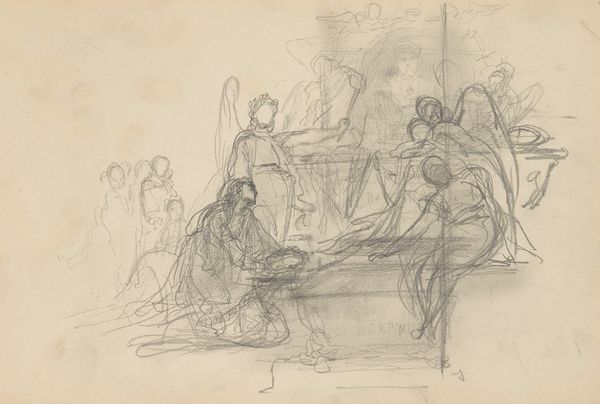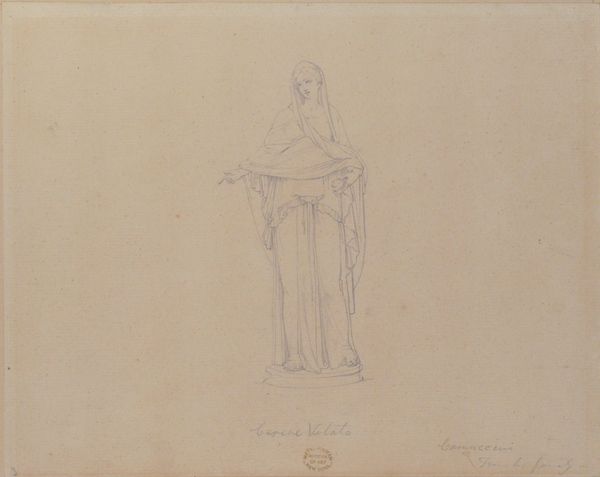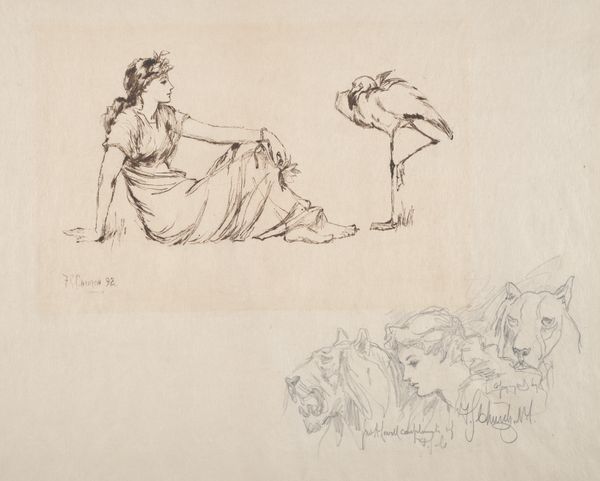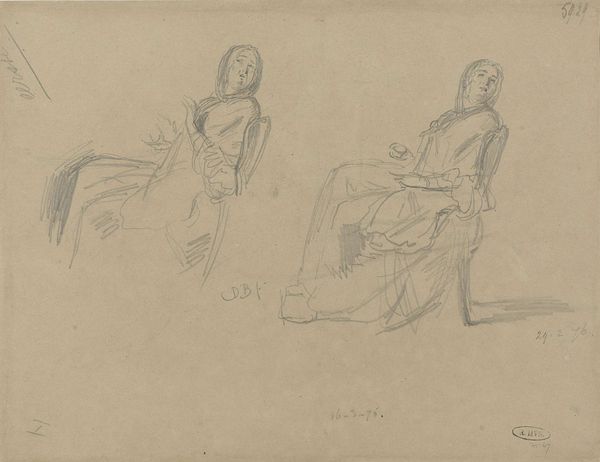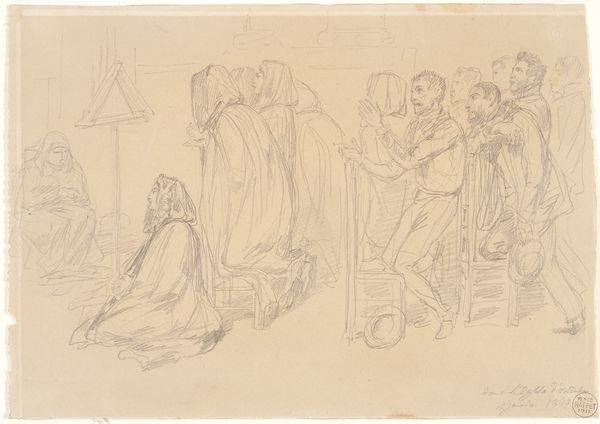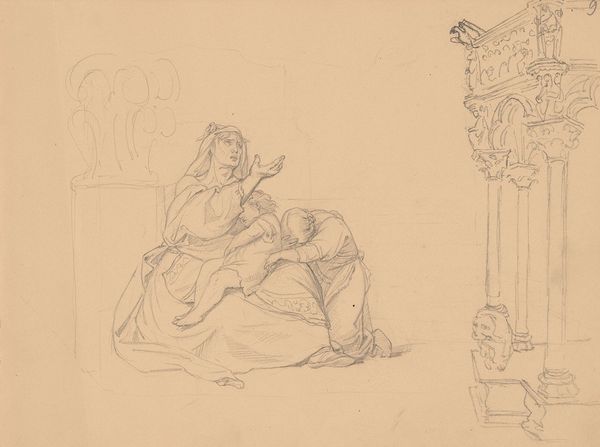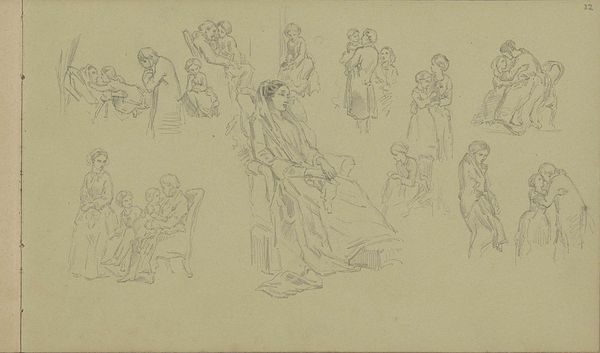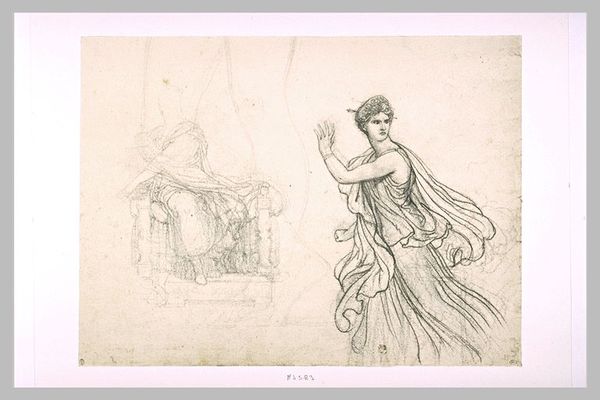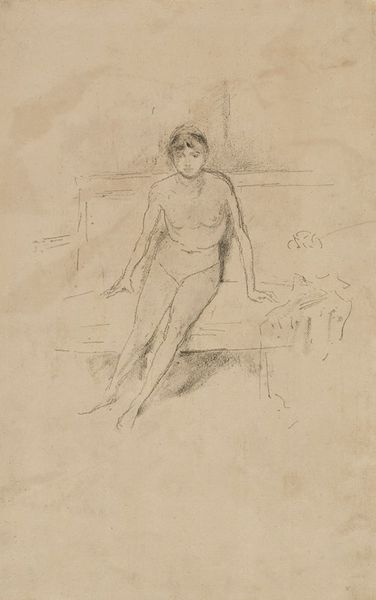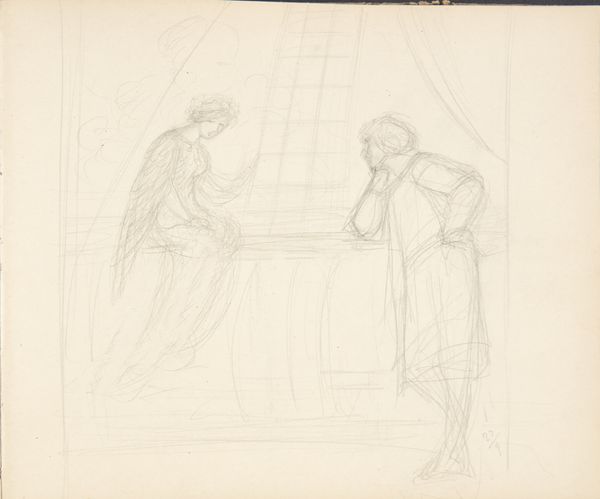
drawing, pencil
#
portrait
#
drawing
#
figuration
#
romanticism
#
pencil
#
history-painting
#
academic-art
Copyright: Public Domain: Artvee
Carl Spitzweg made this study of figures using graphite on paper in the 19th century. It's a relatively quick and economical medium, very different from the weighty oil paintings we often associate with that period. Graphite pencils, though seemingly simple, were actually products of sophisticated industrial processes even then. Mining the graphite, processing it, and encasing it in wood involved significant labor. The accessibility of this medium democratized art-making to some extent. It allowed artists to capture fleeting moments and ideas with speed and precision, as we see here. Spitzweg's choice of graphite allows us to witness his thought process, the evolution of forms, and the layering of lines as he worked. You can see how the material invited him to suggest rather than define, leaving much to the imagination. By focusing on the materials and the means of production behind even a simple drawing like this, we gain a deeper appreciation for the context in which art is made, bridging the gap between the artist's studio and the wider world of labor and industry.
Comments
No comments
Be the first to comment and join the conversation on the ultimate creative platform.
